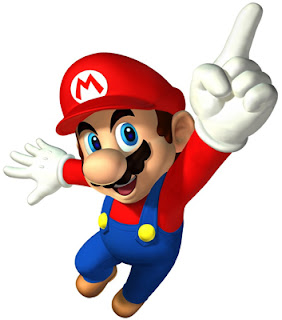Think about your favourite game, or the most distinctive
game you know. Final Fantasy? Journey? Now think about what makes those games
stand out.
 |
| You've got one guess to guess the game |
Did you say gameplay? That’s a difficult thing to define; in
magazines it’s a
term used to score how much the player or reviewer enjoyed playing the game
overall and it’s how the player will interact with the game. Perhaps there’s a
battle system that really worked in
your opinion? Gameplay is about how you interact with the game and how the game
interacts with you.
Of course, you’re even more likely to have said the artwork,
the storyline or the characters. Chances are whatever you think sets your game apart
from the others it’s going to be in the Game Design sector of production; The
rules and mechanics, characters and scenery all come from this one area and nowadays
meticulous work is put in to ensure that even though a team of people are
creating these elements, they all look like they’ve come from one place. Studios
such as Valve and Bethesda are currently some of the prominent figures in this
industry, creating striking, memorable.
 |
| Everybody knows Mario, Even if you haven't played any of the games |
In the beginning, emphasis was on programming with the
limited resources available to game developers. Whilst box art and booklets
might allow artists to create and expand on characters and story it was
gameplay that took the main stage, with focus on programming and minimal
visuals – though what visuals were had could be very distinctive.
 |
| What a design |
Now it shares it with
the game visuals and game design takes place in pre-production as well as
Production of a video game, it goes beyond character and environment concepts
in the pre-production stage to include game mechanics such as rules and plot.
With the huge amount of content in games nowadays the game designers not only
have to think of the game’s core rules and storyline, but also side-quests, back
stories and lore which flesh out the ever expanding worlds that games inhabit
today. In production, game design takes on the roles of texture painters, asset
creation and modelling which are necessary to create the complex scenes and
objects that have become the norm in today’s games. With so much content the
role of the designer is pivotal in the industry as it rests on their shoulders
to create and maintain the feelings and motifs that will run through a game;
the art and visual aspects of the production will tie the game together to make
it a whole, singular piece where even the slightest discrepancies between style
and feel may throw off the game completely and greatly impede the players
suspension of belief and immersion.
Each of these games,
from the very earliest to the most cutting edge have had a distinct look and though
their genres may differ, the principles behind their design are the same; a
consistent image, a memorable motif and design and striking, immersive visuals.
In this way they are not dissimilar to board games;
the little metal dog are the only three words you need to think of the game
monopoly, ‘Professor Plumb’ instantly invokes images of Cludo. Guess who,
mousetrap, snakes and ladders all have distinct and striking designs and
gameplay not unlike video games, though they’re definitely lower-tech (Though
monopoly has gone electronic with it’s money and banks recently).
 | |||
| When you say portal, I think - Clinical white walls, haunting scenes and increasing decay. Yay! |
Returning to answer my own question now; to me Portal and
Portal Two are some of the most distinctive games I’ve ever played. To call the
name to mind is to conjure an instantly recognisable mental picture that
characterises the game and makes it distinctive and memorable. Strong visual
cues in the lighting, colour schemes and character designs set it apart
instantly and I like to play games who’s art grabs and engages the player.
Coupled with a story that causes you to think upon and recall the game’s
visuals and plot, that stays with you after you’ve played is the best kind of
game in my opinion.
No comments:
Post a Comment